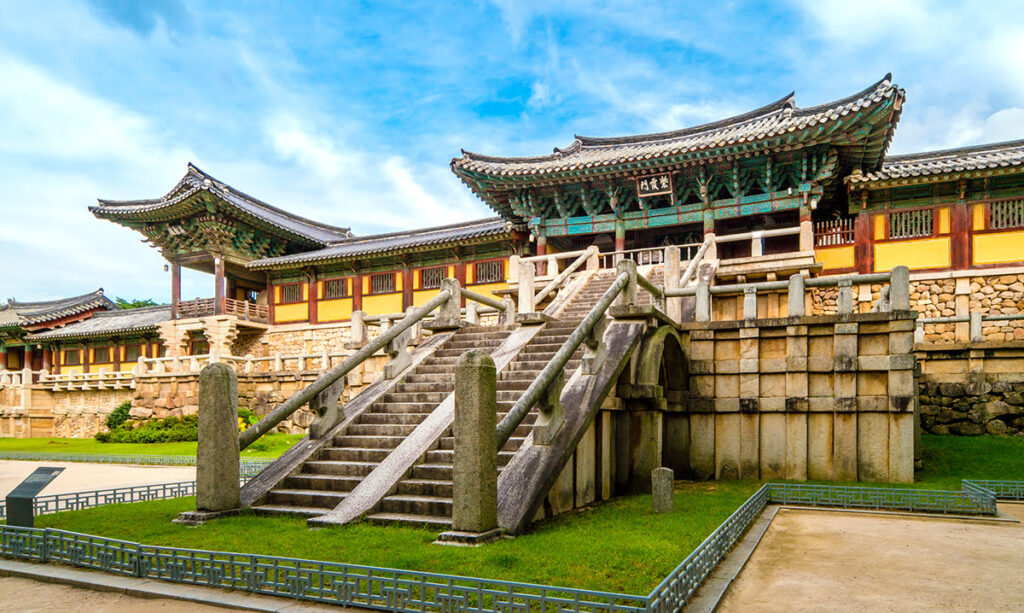Gyeongju, South Korea – Travel Tips
Category
Categories
Popular Articles

**Overview of the Destination: Gyeongju, South Korea**
Steeped in history and culture, Gyeongju, formerly known as Seorabeol, is one of the ancient capitals of Korea’s thousand-year-old Silla Dynasty. Famous for its historical sites and natural beauty, it’s often referred to as “the museum without walls.” Gyeongju is an unrivaled travel destination for any history buff or nature lover, captivates visitors with its vast ancient tomb complexes, Buddhist temples, royal palaces, pagodas, pleasure gardens, and fortresses worthy of UNESCO World Heritage status.
**Best Time to Visit Gyeongju**
The best time to visit Gyeongju is between March and May (spring) when the cherry blossoms are in full bloom, or between September and November (autumn) when the weather is mild and the fall foliage is at its peak. The city celebrates the Cherry Blossom Marathon in April and Gyeongju Silk Road Cultural Festival in September, both of which are worth planning your trip around. Summers can be hot and humid while winters are cold, often below freezing.
**Climate & What to Pack**
Gyeongju sports a temperate climate with four distinct seasons. Summers demand lightweight, breathable clothing while winters call for heavy coats, hats, and gloves. Spring and fall are cool with occasional rain, requiring warm layers and a rainproof jacket. Comfy walking shoes are a must, given the city’s pedestrian-friendly historical sites.
**Getting There**
The closest international airport is Incheon International Airport in Seoul. From there, you can take a domestic flight to Ulsan or Pohang Airport then a bus or taxi to Gyeongju. Alternatively, there are express inter-city buses and trains directly from Seoul. As for entry requirements, most visitors will only need a valid passport, though some may require a visa, so it’s crucial to check your country’s embassy website beforehand.
**Getting Around Locally**
Gyeongju is a small city, making it perfect for exploring on foot or by bike. However, for those wanting a faster option, there are public buses, taxis, and rideshares available. Renting a car is not recommended due to the city’s often heavy traffic.
**Safety Tips**
Gyeongju is generally safe, with low crime rates. Nonetheless, it’s prudent to exercise caution, particularly in crowded areas. As in any city, keeping an eye on personal belongings and being aware of your surroundings is advisable. As for cultural etiquette, be respectful at Buddhist temples and historical sites. When it comes to solo travelers, the city is quite accommodating with hospitable residents and an easy-to-navigate locale.
**Top Things to Do & See**
Highlights include the historical area containing the Bulguksa Temple and Seokguram Grotto, the serene Anapji Pond, and the vast tomb park, Tumuli Park. For a unique experience, participate in a traditional tea ceremony, take a pottery class, or try a hanbok (traditional dress) fitting.
**Where to Stay**
For luxury accommodations, consider the Hilton Gyeongju or the Lahan Select Hotel. Mid-range options include Sugar Hotel or Hanjin Hostel, while budget travelers will find good options at Blueboat Hostel or guest houses in the city.
**Food & Local Cuisine**
Gyeongju’s signature dishes include Hwangnam-ppang, a sweet red bean pastry, and Ssambap, a Korean style of dining where grilled meat or tofu is wrapped in leafy vegetables. Experience local fare in traditional restaurants like Hwangnamguan or try street food at Gyeongju’s vibrant markets.
**Cultural & Practical Tips**
The currency is the Korean Won, and while many places accept credit cards, cash is preferred at markets and smaller businesses. Locals speak Korean, but English signs are ubiquitous. Tipping is appreciated but not customary. Both types C and F plugs with two round pins are used, and the voltage is 220V. Free Wi-Fi access is widespread, particularly in cafes and hotels.
**Sustainable or Responsible Travel Tips**
Respect local customs and be mindful when visiting cultural sites. Refrain from littering and try to minimize plastic consumption by carrying a reusable water bottle or shopping bag. Also, support local businesses by dining at local eateries or buying from artisan markets.
**Personal Travel Tip**
Bring a sense of curiosity and time to slowly appreciate the unique blend of heritage and modernity that Gyeongju offers. While the well-known attractions are a must, also take time to wander off the beaten path and make your own unique discovery.










